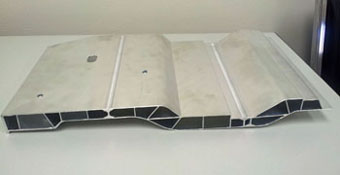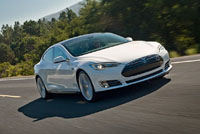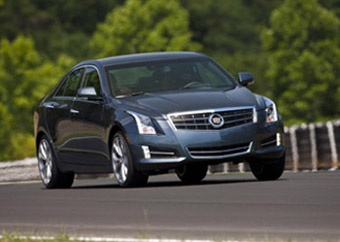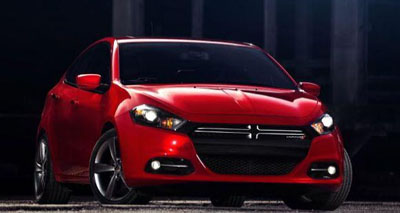Aluminum Extrusion Shines in New Auto Applications
 When Chevy took the wraps off their 7th generation Corvette at the recent North American International Auto Show (NAIAS) in Detroit, they also highlighted the new Stingray's standard, all-aluminum frame. Comprised of aluminum castings and extrusions, the new frame weighed in at 45 KG lighter than today's steel frame, while providing a 60-percent improvement in stiffness. The result: world-class performance, improved fuel efficiency and improved ride and handling.
When Chevy took the wraps off their 7th generation Corvette at the recent North American International Auto Show (NAIAS) in Detroit, they also highlighted the new Stingray's standard, all-aluminum frame. Comprised of aluminum castings and extrusions, the new frame weighed in at 45 KG lighter than today's steel frame, while providing a 60-percent improvement in stiffness. The result: world-class performance, improved fuel efficiency and improved ride and handling.
But while the new Corvette may be one of the most striking examples of extrusion usage in new autos, it certainly is not the only one.
More Than Corvette
Numerous manufacturers are rolling out new models with increased extrusion (and aluminum) content as they strive to achieve more demanding mileage standards. The average North American car contained just over 12 pounds of extrusion in 2012, with applications ranging from chassis to seat backs and from suspension components to sun roofs. According to Ducker Worldwide, a leading automotive research organization, extrusion usage is likely to double between now and 2025; they estimate that "light weighting" — a major driver to increased extrusion usage — will yield a 3-6 mpg improvement in fuel efficiency by that time.
Another example: the new 6th generation SL Roadster from Mercedes Benz incorporates a floor structure comprised of three multi-chamber hollow extrusions joined via friction stir welding. One of the first high volume auto uses of friction stir welding, the resulting floor reduces weight by 1.3 pounds, while minimizing component height to facilitate better interior packaging. And it's just one element of a new all-aluminum body that cuts weight by 300 pounds while increasing rigidity.
 |
 |

Tesla's award winning Model S, also boasts substantial aluminum usage, with more than 25 extrusions, including chassis elements, battery box components and extruded rear suspension links that provide the strength of forgings at reduced cost.
More Than Exotics
While it may seem that extrusions' growing usage is limited to high-end vehicles (Jaguar's new F type is another new offering with extensive aluminum usage), there are impressive examples of extrusion applications in new cars that are more likely to be on the average driver's shopping list.
Cadillac's new 2013 ATS luxury sport sedan, designed to compete with BMW's 3-series and the Audi A4, was named the North American Car of the Year at NAIAS. The ATS makes extensive use of extrusion in its front subframe, and has an overall aluminum intensity of approximately 14 percent of body weight – a first for a non-specialty vehicle.
 |
 |
Finally, Dodge has launched its 2013 Dart with the objective of fulfilling the basic mission of the original: to be a relatively upmarket compact car, selling at a small premium but delivering a better driver experience than competitors. Among the extruded components contributing to that driving experience: an aluminum cross-member with an optimized weight/stiffness ratio for reaction to lateral loads, and independent rear suspension using lightweight, hollow aluminum longitudinal arms.
 |
Image Credits:
© General Motors
http://www.chevrolet.com/new-2014-corvette/?seo=goo_|_GM+Chevy+Awareness_|_GG-AWR-Corvette-Stingray-BP-SN-Exact_|_Corvette+Stingray_|_2014%20corvette
Mercedes-Benz USA
http://www.mbusa.com/mercedes/vehicles/class/features/class-SL/vehicle-design
Tesla Motors, Inc.
http://www.teslamotors.com/
Allpar.com
http://www.cadillac.com/ats-luxury-sport-sedan.html
http://www.dodge.com/en/2013/dart/
 -
-




 |
|